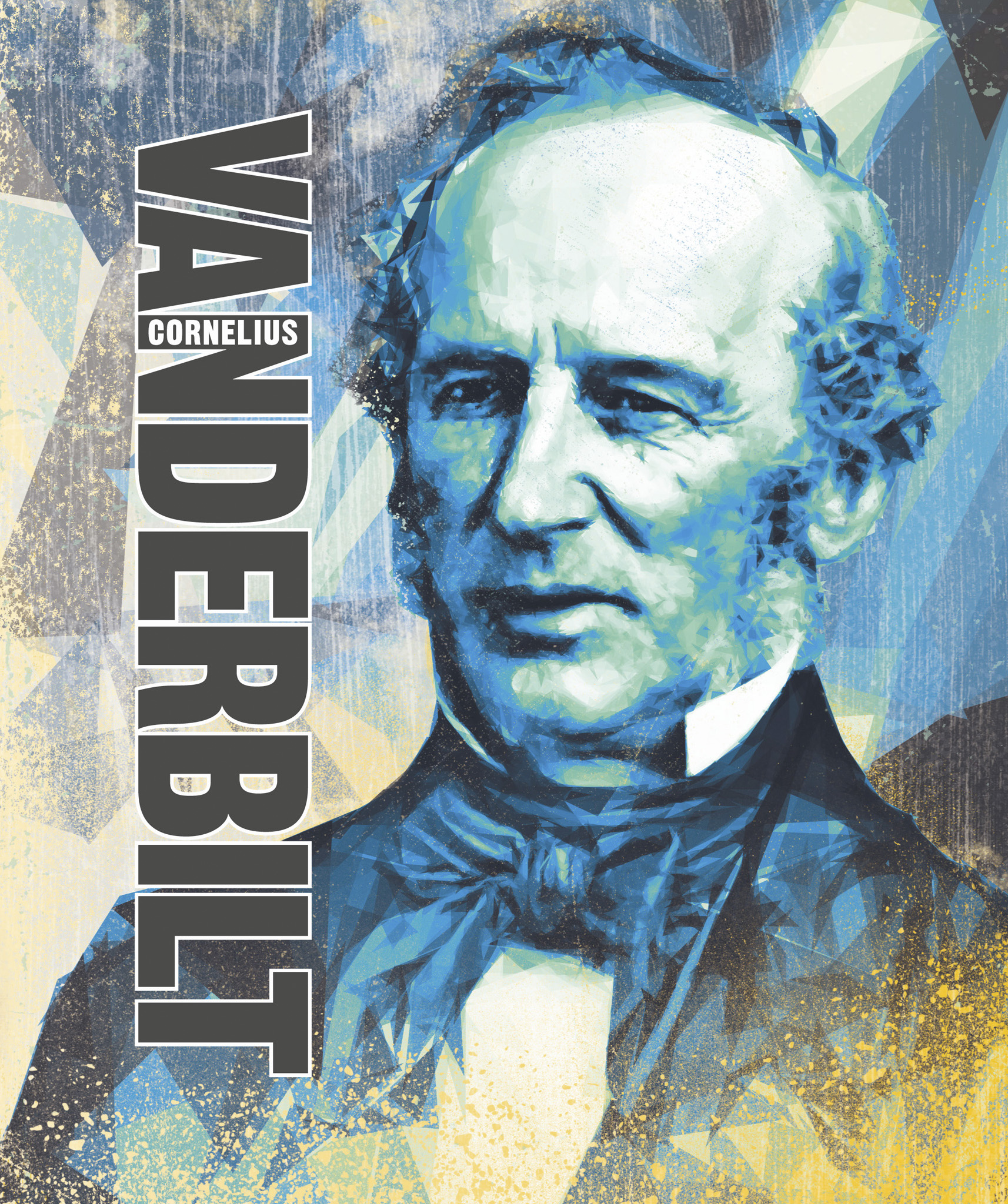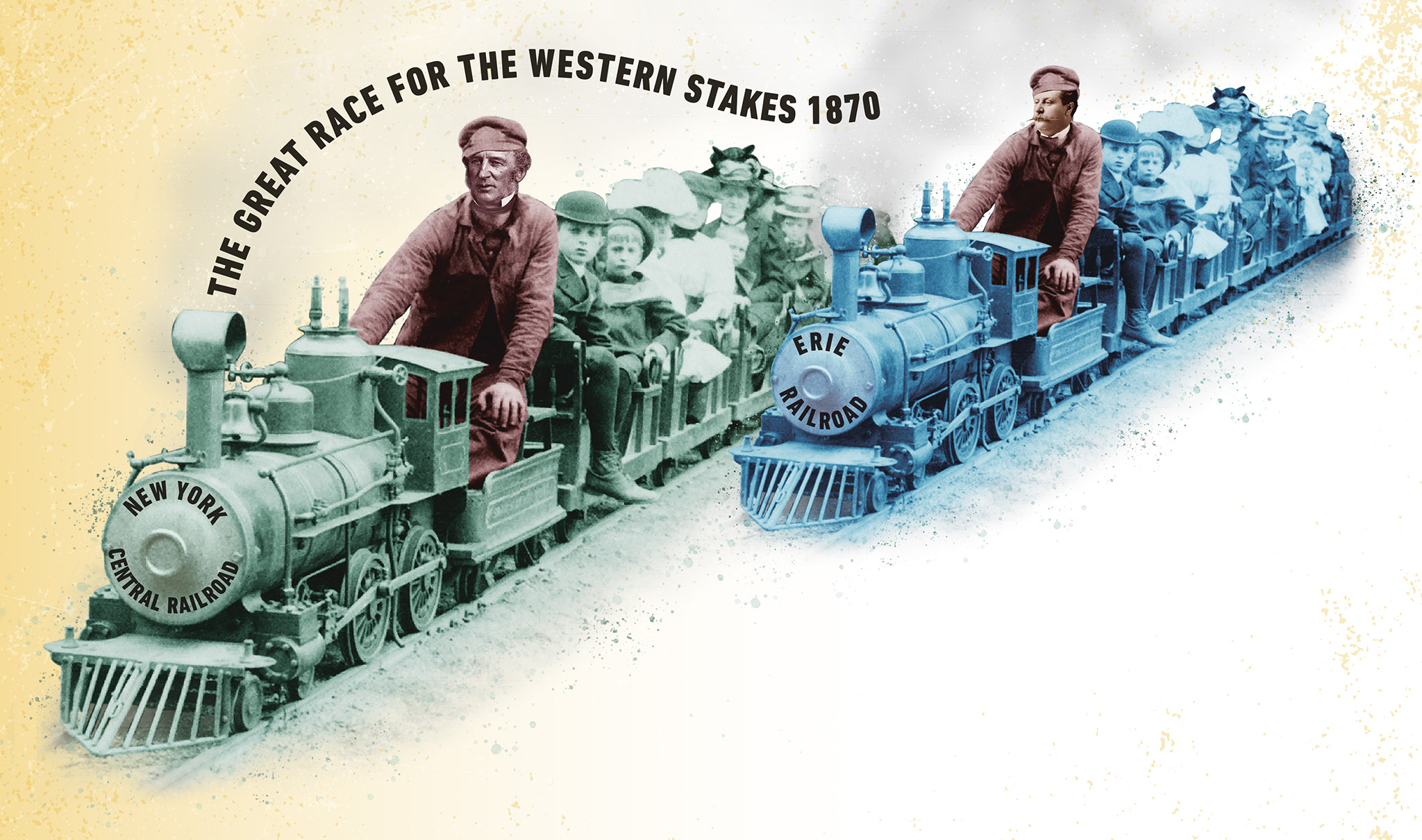
CORNELIUS VANDERBILT
1794–1877
A 19th-century shipping and railroad magnate, Cornelius Vanderbilt was a ruthless, shrewd, and competitive businessman. Able to offer reliable services and cheap fares without compromising on comfort, he undercut his rivals and broke down steamship monopolies. He embraced new transportation technologies, later moving from water to rail.
Cornelius Vanderbilt was born on May 27, 1794, in Staten Island, New York. His parents were poor and his father worked as a ferryman. From him, Vanderbilt learned a plain-spoken, blunt approach to dealing with people, while his mother taught him the benefits of frugality and hard work.
At the age of 11, Vanderbilt left school and went to work with his father, who ferried passengers between Staten Island and Manhattan. In 1810, he spotted his first business opportunity: convincing his parents to loan him $100, he bought a sailing boat and started his own ferry business. His parents did this on the condition that Vanderbilt gave them part of his profits until the loan was paid off.
Vanderbilt’s ferry business was an almost overnight success. Within a year, he was able to pay back his parents’ loan as well as an additional $1,000 as their share of the profits. Vanderbilt learned that by undercutting the competition and marketing his ferry business aggressively, he could quickly create a large customer base. He would repeat this strategy for almost every subsequent business venture.
Steamship success
Over the next two years, Vanderbilt amassed a whole fleet of ships and had a working capital of several thousand dollars. During the War of 1812—a three-year conflict between the United States and Britain—the US government awarded Vanderbilt a contract to supply ships to the Eastern Seaboard. Vanderbilt was known as the “Commodore” because of his shipping success, a nickname in which he took great pride.
Vanderbilt was drawn to business figures he could learn from. One such man was Thomas Gibbons, who employed Vanderbilt to run his steamship business in 1818. Gibbons was embroiled in a legal battle to break a competitor’s monopoly of a steamboat route between New York and New Jersey. Gibbons won the case and did his best to bankrupt his rival by undercutting him with his own steamships.
“There is no friendship in trade.”
Cornelius Vanderbilt, 1765

Vanderbilt earned much of his fortune in the steamboat industry in New York and New Jersey. By the time of his death, his family was one of the wealthiest in the whole of the United States.
Across the ocean

Learning from his experience with Gibbons, Vanderbilt then set about undercutting rival steamship businesses and breaking their monopolies until they were forced to buy him out. Already a millionaire, Vanderbilt took advantage of the California Gold Rush of 1849 by expanding his shipping business to include oceangoing steamships that took prospectors and other customers from New York City and New Orleans to San Francisco via Nicaragua. During the US Civil War (1861–1865) Vanderbilt sold or leased all his ships, at the time making him the richest man in the US.
After retiring from shipping, in 1864 Vanderbilt decided to go into the railroad business by buying up most of the stock in the New York and Harlem Railroads. He continued to buy up other railroads and eventually controlled every line from New York to Chicago.
By standardizing rail timetables and fares, Vanderbilt helped revolutionize rail travel in the US. He ordered the building of the Grand Central Depot (now Station) in New York. The railroad terminal's construction created thousands of jobs at a time when the US was in the midst of a financial crisis. In 1870, he consolidated two lines to form the New York Central and Hudson River Railroad.

Vanderbilt bought multiple railroad lines between New York and Chicago. He was famously involved in a financial battle between financier Jim Fisk (right) and his associates Daniel Drew and Jay Gould for control of the Erie Railroad Company.
University legacy
Despite his enormous personal wealth, Vanderbilt had no interest in giving his money to charity. However, he was persuaded by his second wife to donate $1 million (then the largest charitable gift in US history) toward the building of a university in Nashville, Tennessee, which would become the Vanderbilt University. He died on January 4, 1877, aged 82.
J.P. MORGAN

Financier, banker, and industrialist John Pierpoint Morgan initiated the formation of several multinational companies.
After first working as an accountant, Morgan (1837–1913) founded J.P. Morgan in 1895. It became one of the largest banks in the world. Morgan then became a railroad magnate in 1902 and merged several companies to form the largest US corporations, including the US Steel Corporation and General Electric. He later influenced multiple banks and insurance firms by sitting on their boards.
MILESTONES
MOVES INTO STEAM
Joins steamship business owner Thomas Gibbons in 1818. Learns to manage big commercial operations.
MAKES FIRST MILLION
Becomes a millionaire in 1846, after gaining control of virtually all traffic on New York’s Hudson River.
FORMS A CORPORATION
Consolidates his railroads into one entity in 1870, creating one of the first US corporations.
DIVIDES LEGACY
Dies in 1877, leaving 90% of his $100 million estate to son William but token amounts to other children.
